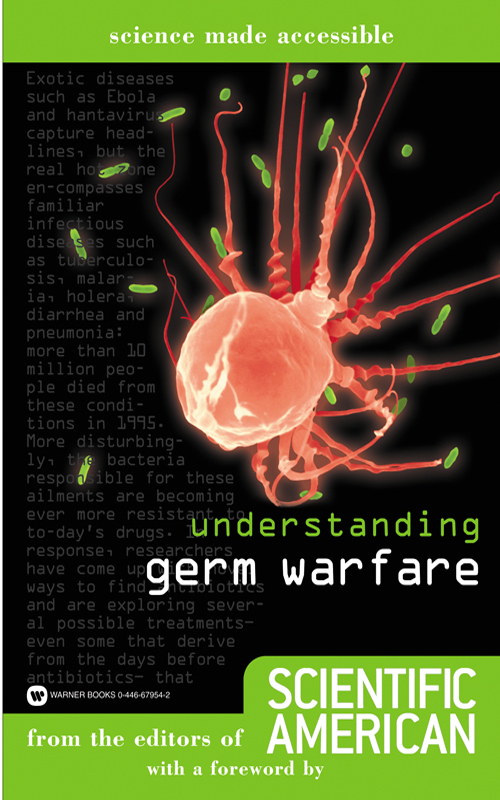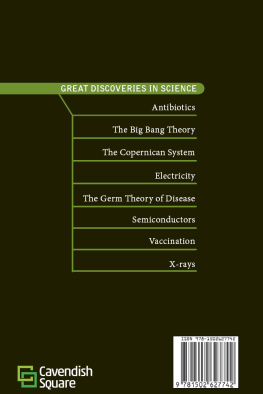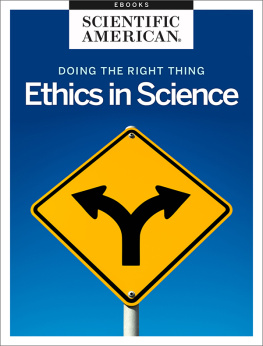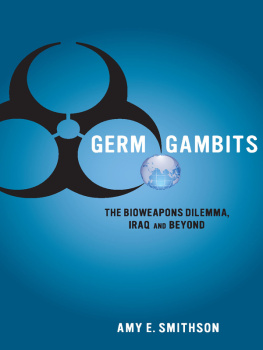Editors of Scientific American - Understanding Germ Warfare
Here you can read online Editors of Scientific American - Understanding Germ Warfare full text of the book (entire story) in english for free. Download pdf and epub, get meaning, cover and reviews about this ebook. year: 2002, publisher: Grand Central Publishing, genre: Romance novel. Description of the work, (preface) as well as reviews are available. Best literature library LitArk.com created for fans of good reading and offers a wide selection of genres:
Romance novel
Science fiction
Adventure
Detective
Science
History
Home and family
Prose
Art
Politics
Computer
Non-fiction
Religion
Business
Children
Humor
Choose a favorite category and find really read worthwhile books. Enjoy immersion in the world of imagination, feel the emotions of the characters or learn something new for yourself, make an fascinating discovery.

- Book:Understanding Germ Warfare
- Author:
- Publisher:Grand Central Publishing
- Genre:
- Year:2002
- Rating:4 / 5
- Favourites:Add to favourites
- Your mark:
- 80
- 1
- 2
- 3
- 4
- 5
Understanding Germ Warfare: summary, description and annotation
We offer to read an annotation, description, summary or preface (depends on what the author of the book "Understanding Germ Warfare" wrote himself). If you haven't found the necessary information about the book — write in the comments, we will try to find it.
Editors of Scientific American: author's other books
Who wrote Understanding Germ Warfare? Find out the surname, the name of the author of the book and a list of all author's works by series.
Understanding Germ Warfare — read online for free the complete book (whole text) full work
Below is the text of the book, divided by pages. System saving the place of the last page read, allows you to conveniently read the book "Understanding Germ Warfare" online for free, without having to search again every time where you left off. Put a bookmark, and you can go to the page where you finished reading at any time.
Font size:
Interval:
Bookmark:

Copyright 2002 by Scientific American, Inc., and Byron Preiss Visual Publications, Inc. All rights reserved.
The essays in this book first appeared in the pages and on the Web site of Scientific American as follows: Evolution and the Origins of DiseaseDecember 1996; A Host with Infectious Ideas May 2001; The Challenge of Antibiotic Resistance March 1998; Fighting Bacterial Infections with Bacteria January 2001; The Cutting Edge May 2001; New Technique Resensitizes Resistant Bacteria to Last Resort Antibiotic August 2001; Beyond Chicken Soup November 2001; Muscular Again September 1999; Many Ways to Make a Vaccine January 1995; Is Global Warming Harmful to Health? August 2000; Outbreak Not Contained April 2000; Trailing a Virus August 1999; Facing an Ill Wind April 1999; Bioagent Chip March 2000; The Specter of Biological Weapons December 1996.
Illustration 2002 Library of Congress: viii, x, 8, 13, 54, 64, 73. 2002
Dennis Kunkel Microscopy, Inc: 125
Warner Books, Inc.
Hachette Book Group
237 Park Avenue
New York, NY 10017
Visit our website at www.HachetteBookGroup.com.
ISBN: 978-0-7595-2748-5
First eBook Edition: December 2002
Dr. Jack Brown
F ossil records show that germs have inhabited the earth for a very long timeperhaps billions of years. And since the dawn of their history, human beings have been in almost constant conflict with germs.
Writings and images from thousands of years ago reveal early knowledge of this fight against germs. Paintings from the time of the Pharaohs show individuals clearly stricken with the disease now known as polio. In approximately 400 B.C., Hippocrates, the father of modern medicine, encouraged sanitation, or the killing of germs, as a disease preventative. Thucydides, a Greek historian from the same time, described how survivors of what was probably the plague were somehow protected from subsequent outbreaks of the same disease and could be used to assist the newly ill. A later outbreak of the plague, also known as the Black Death, began in Europe in the 1300s and cycled among European inhabitants for over 300 years. By the 1600s this disease alone was responsible for the loss of nearly 75% of the population of Europe. Although the plague abated due to more widespread application of sanitation, many other infectious diseases continued to claim the lives of individuals, particularly the young.
As recently as 70 to 80 years ago, a child had an estimated fifty-fifty chance of dying from a contracted infectious disease before the age of ten. Whooping cough, cholera, measles and other infectious diseases killed thousands of children in the United States each year. In some underdeveloped nations, this high probability of death from diseases continues to exist. In the 1940s, the widespread availability of antibiotics, particularly penicillin, enabled great strides to be made to protect individuals from infections.
The development of vaccines in the 1950s and 1960s against many different bacteria, bacterial toxins and viruses led to dramatic success in preventing infectious illnesses. For example, in 1921 in the United States there were more than 100,000 reported cases of diphtheria. In 1996 there were fewer than 10 such casesthe dramatic decline the result a potent vaccine used against this bacterium. In 1941 there were approximately one million reported cases of the measles, but by 1996 vaccines led to less than 1,000 reported cases. In 1952 there were approximately 30,000 cases of polio reported in the United States, a number reduced by medical efforts to zero by 1996. However, the availability of vaccines and other armaments does not necessarily guarantee safety from infectious illness. It is estimated that in the United States alone at least 20,000 deaths occur each year due to complications associated with contracting the flu.
Each scientific step forward has led to new questions. How have the inexorable pressures of evolution shaped the organisms that cause disease and our response to them? Why do many antibiotics no longer work against certain bacteria? With all of the new technology, why arent we further ahead in this fight? How can these germs be used against us in combat? Are we ready for any resurgence of these germs? These questions among others are thoroughly considered in this timely, well written and provocative collection of essays that focus upon germs and our relationship to them.
Understanding Germ Warfare begins with a remarkable journey into the complex world of germs through discussions of evolutionary biology, a field that is growing in importance by providing insight into the causative mechanisms that establish interdependence between germs and humans as each evolves. By understanding such relationships, the reader gains a better understanding of infectious disease and how humans may impose restrictions on disease outcomes. Subsequent chapters focus upon various aspects of infectious disease and the methods used, including antibiotics and vaccines, to fight the bacteria and viruses that cause such harm.
While antibiotics have saved many lives, the overuse of these drugs in medicine, agriculture and animal care has also resulted in a selection of harmful bacteria that are now resistant. How do infectious organisms gain resistance to such drugs? How can we avoid or at least diminish this apparently inevitable outcome from the use of antibiotics? What new methodologies are presently being developed to combat germs? Can we significantly improve our own fighting response, the bodys immune response, to infectious organisms, and if so, how? These issues are thoroughly discussed and potential solutions revealed in the upcoming chapters.
Understanding Germ Warfare also details how widespread travel affects global exposure to previously geographically isolated infectious agents; what affect global warming has upon infectious disease occurrences; and how rapidly and how well we can respond to the occurrence of a previously unknown infectious organism.
The last section of the book concerns biological warfare and related issuesa most complicated subject, particularly in light of the events since September 11, 2001. Bioterrorism, or the purposeful use of biologic agents to wreak death and fear among innocent populations, is not a new idea but sadly is currently a significant concern. These chapters discuss in a straightforward and non-inflammatory manner the biologic agents involved and offer timely suggestions as to the methods, both practical and political, that may be used to prevent and/or medically respond to such attacks.
When you have finished reading this collection, you will be brought up to speed on our on-going war with germs by authorities in almost every aspect of infectious organisms. Understanding Germ Warfare will enable you to travel through this complex micro-world on sure footing.
Sandy Fritz
G erms are everywhere! warns a soap advertisement. Protect yourself and your family! While it is true that germs are everywhere, antibiotic hand soap does little to protect you from the kind of germs that would cause harm.
Germs, a word derived from the Latin word meaning to grow, is a blanket term that describes microorganismsmostly bacteria and viruses. The majority of these microbes live blameless lives, with many that actually help us. A few, however, have specialized in infesting human beings. Germs that infect us and make us sick are known as pathogens.
How did pathogens evolve? And how did the human body develop a defensive strategy to deal with an attack by life forms too small to be seen by the unaided eye? The delicate balance of defense against invaders while keeping the immune system calm enough to leave healthy body tissue undamaged is the topic of this books first article, Evolution and the Origin of Disease. In it are described instances where our defenses are nothing short of elegant. In other instances youll learn our defenses resemble patched together solutions that are limited due to the very nature of our physical structure.
Font size:
Interval:
Bookmark:
Similar books «Understanding Germ Warfare»
Look at similar books to Understanding Germ Warfare. We have selected literature similar in name and meaning in the hope of providing readers with more options to find new, interesting, not yet read works.
Discussion, reviews of the book Understanding Germ Warfare and just readers' own opinions. Leave your comments, write what you think about the work, its meaning or the main characters. Specify what exactly you liked and what you didn't like, and why you think so.









